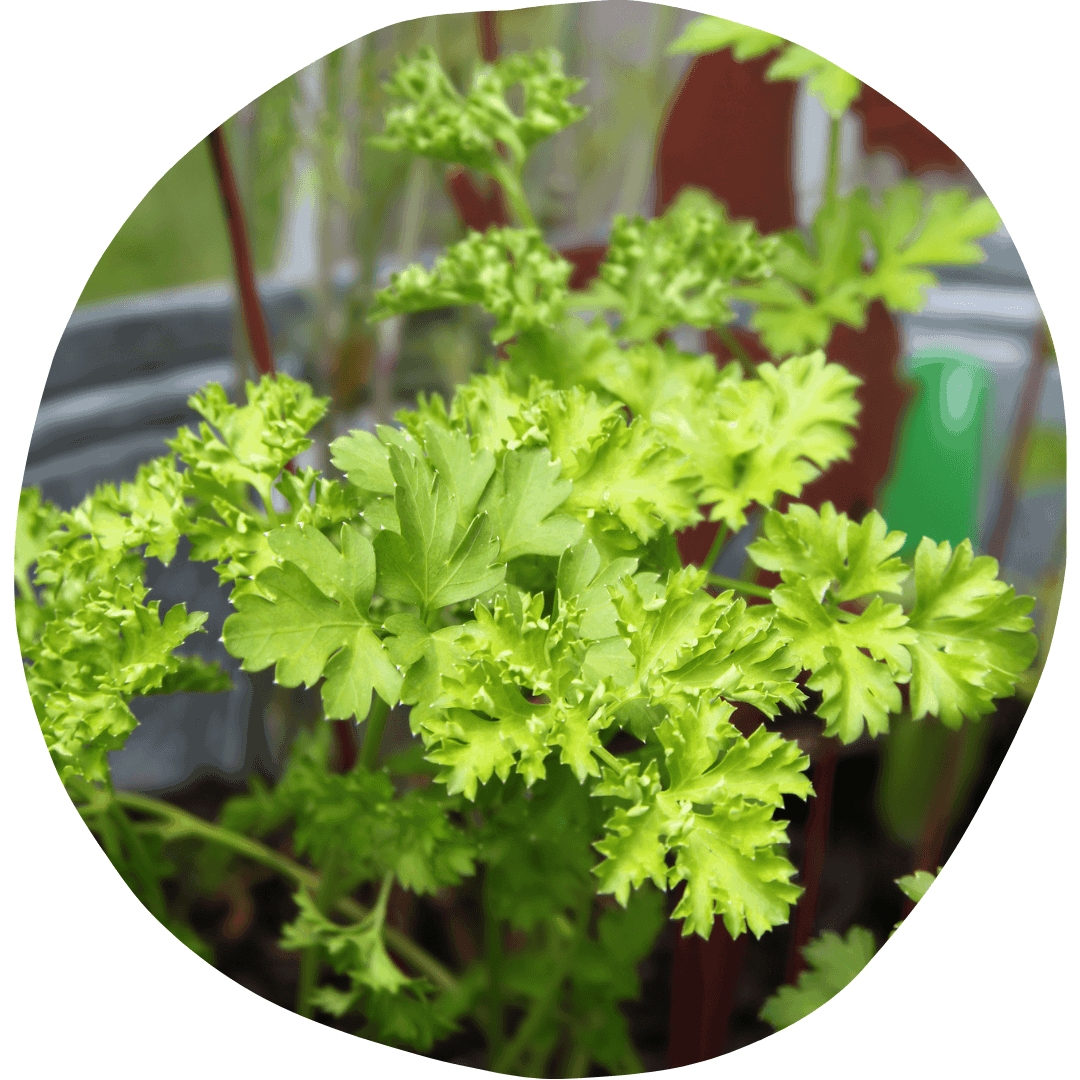How to Grow Parsley
Growing Conditions
Parsley will germinate in temperatures as low as 10ºC, so it's best started indoors in our short growing season. It requires full to part sun and soil rich in nutrients. Keep your bed clear to easily distinguish newly sprouted parsley seedlings from weeds.
Starting
Sow your parsley seeds indoors 6-8 weeks prior to your last frost date. Parsley is relatively slow to germinate and can take up to 4 weeks to come up. Soak your seeds for up to 24 hours before planting to increase the germination rate. Sow seeds 1/4" deep and keep their soil moist and warm. Be careful when transplanting out into the garden or containers as their root system can be delicate. We recommend using a compostable pot to avoid damage to the roots.
Find our full guide to seed starting here.

Care
Once it's started parsley requires little upkeep to grow well. Keep plants well watered, especially in hot weather. Supplemental fertilizer can be added throughout the season if soil is poor and leaves begin to yellow. Prune back damaged or discoloured foliage as needed. Parsley is a biennial plant and will likely not bolt/produce a flower in its first year, but it will be killed by freezing temperatures in the winter without protection.
Pests and Diseases
Aphids - Small green, black, or brown insects that feed on the sap of garden plants. You'll find them under leaves, at blossom tips, and in the joints of stems.
Slugs and Snails - Common garden pests that feed after dark, leaving large patches of damage.
Root Rot - An infection that causes soft spots on the upper portion of the root and wilting foliage.
Crop rotation, garden cleaning, and proper spacing between plants are the best ways to prevent problems caused by pests and diseases. Diatomaceous earth can be used to control crawling pest species, while sticky traps will catch flying pests. Row covers and insect netting can also prevent travelling pests from landing on your crops and causing damage. Ensure good drainage in your chosen planting spot to prevent problems with fungus and rot. Contact us for more specialized pest control methods such as beneficial nematodes.
Harvest
Once the plant produces multiple main stems that begin to branch off, your parsley is ready to harvest. Cut outer stems at the base of the plant, leaving the center stems to encourage further growth. Parsley can be stored in the fridge or dried.

